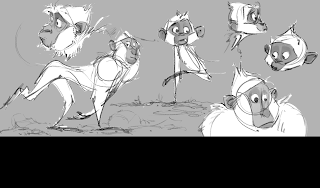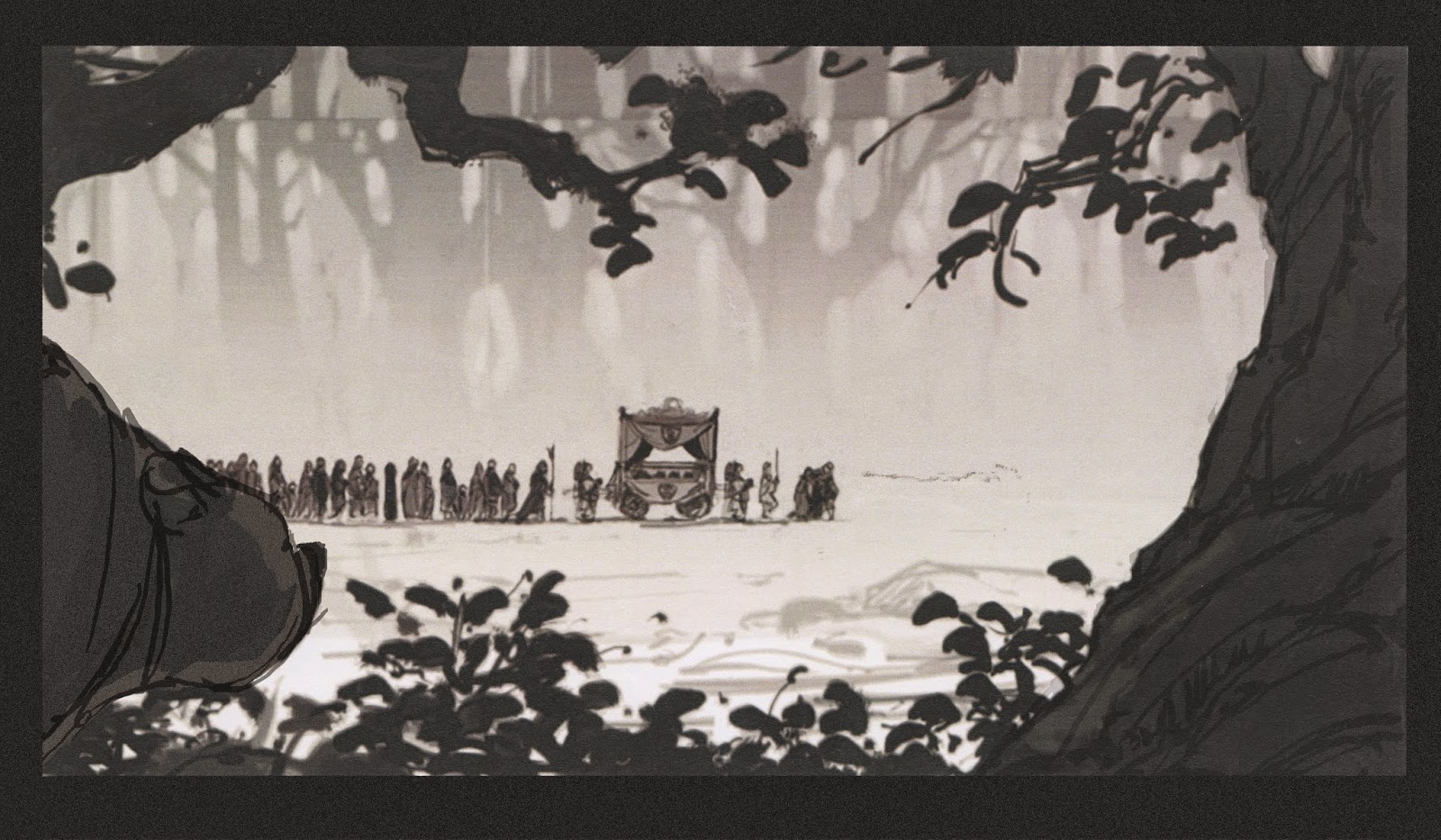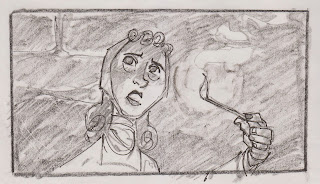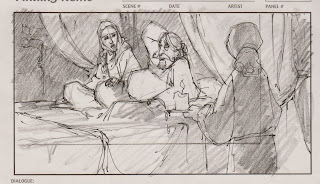THUMBNAILS, the
MAP and COMPASS of STORYBOARDING
I'm
about to embark on my third year at Cal Arts teaching a class on
storyboarding. I'm looking forward to the new students, their excitement
and hungry to learn something new is infectious. Because my class is an
elective I have a mixer of students not all of which want to be
storyboard arts. Some want to be writers, some are film students, and
some are not sure what they want to do. This wide range of students
presents me with a problem that some of the other class don't
necessarily have to deal with. My class is made up of second year
students with a wide range in their draftsmanship (drawing abilities),
from strong to medium and in some cases even weak. What ever their level
is, my storyboard artist and designers all have a common denominator,
they like to draw, and they want to learn to draw better. Now, add in
some students that are not really interested in drawing for a living and
you have a very challenging storyboard class.
The late Joe Ramft said, "Drawing permeates every aspect of story boarding". Does this statement mean that if you don't draw well you can't be a storyboard arts? No, in my experience not at all. Some of the best board artists I know have a more primitive drawing style, in fact some of them I strive to be as good of a board as they are. I also know quite a few very talented draftsman who were not successful in their quest to become story artists. So, the question is how does someone become and/or survive as a board artist. The first thing to ask yourself, can I take what's in my head and turn it into a drawing.
A
key element in storyboarding is transference of information, if you
have an idea (no matter how good it may be) but you cannot translate
into a drawing you're going to have a very hard time as a board artist.
Storyboarding (interpreting) a script can be very difficult in itself,
you don't need the additional problem of the inability to draw it.
Storyboarding has evolved so much over the last 10 years, it entails so
much more than it use to. This evolution has resulted in many different
levels of board artists in the industry, they ranging from what I call
basic pipe layers (basically just drawing from point A to point B), they
read the script and then draw with out any thought what so ever of what
the scene really needs to work within the big picture. My friend and
exceptional board artist John Hurst once said "The job of the board
artist is to give the Director what he asked for in a way that he never
expected." This means you have to be able to think.
I
tell my students that 90% of boarding is thinking and 10% is the
execution of drawing. This statement may not be entirely accurate but
with their lack of knowledge and experience I'd rather error on the side
of thinking. I'm always pushing for them to broaden their visual
library, (the pictures in their heads of which they can call on to
draw). This visual library is invaluable to any artist much less a board
artist. I beg my students for their own sake to watch movies old and
new, look at magazines, take photo field trips, etc...) but with the
internet I am fighting an up hill battle.
The
next element of becoming a successful board artist is KNOWLEDGE. I
will say as a board artist I am always learning something new. Every
sequence I have boarded has had it's own inherent problems to be solved.
The more you know the better you're equipped to execute your scene
successfully. There is so much to learn about boarding, it comes down to
the depth you was to go.
If I don't have a sketchbook with me I'll draw on
just about anything. Some of my best problem solving is
done on random available paper.
Sketches on a post it note, project "QQ SPEED"
My sketchbook now is a three ringed binder with
pre-punched xerox paper in it. I still have some
really nice unused sketchbooks but my binder is
so easy to draw in, I don't suffer from the
"What if a do a bad drawing syndrome."
These drawings are inspired by my middle child.
Cintiq sketches
This is a cleaned-up sketch page.
"MONKEYS OF MUMBAI"
This is a sketch of Fergus, color-erase on velum.
funeral scene in it. Everyone in the kingdom
believed the Queen to be dead. These were some shots
I explored for the scene.
In the original draft of "BRAVE" there was also a
character named Gwenny, the daughter of the wise
woman. These where actual drawings on paper
(China marker on velum). They were exploring
the King and Queen being roused out of their slumber
by Gwenny, she informs them of another attack
from the marauding rouge bear.
Right out of one of my sketchbook!
These are from the napkin sketches above, I scanned
them into the computer and drew over them on the cintiq.
A thumbnail sketch from a project I was working on.
My students have a hard time understanding that a
thumbnail sketch comes in all shapes and sizes. They
can be rough or clean, with or without borders. It is
the think stage in the storyboarding process.
This is the first drawing I did after my neck and back
surgery. I was worried about losing my ability to draw.
I have since recovered and back in the saddle.
These are all sketches from my time on "BRAVE"
some with purpose and some not. The panels up
top were of the King mingling with the commoners
at the Highland games. At bottom the Queen and
Merida not getting along so well on a road
trip together.
This is one of the sketches I did during a brain
storming session while at BlueSky Studio. I was
working on "ICE AGE II (The Melt Down), I
was in visual development with them, but it was all hands on
deck when the effects department announced that we
have to cut back on water effects by 50%.
An old workbook drawing from the "MULAN" days.


































































Great post. I read it over a lunch at home and feel like I just had a "Lunch and Learn". Thanks for sharing. Love the random sketch scans and all of the BRAVE scenes.
ReplyDelete